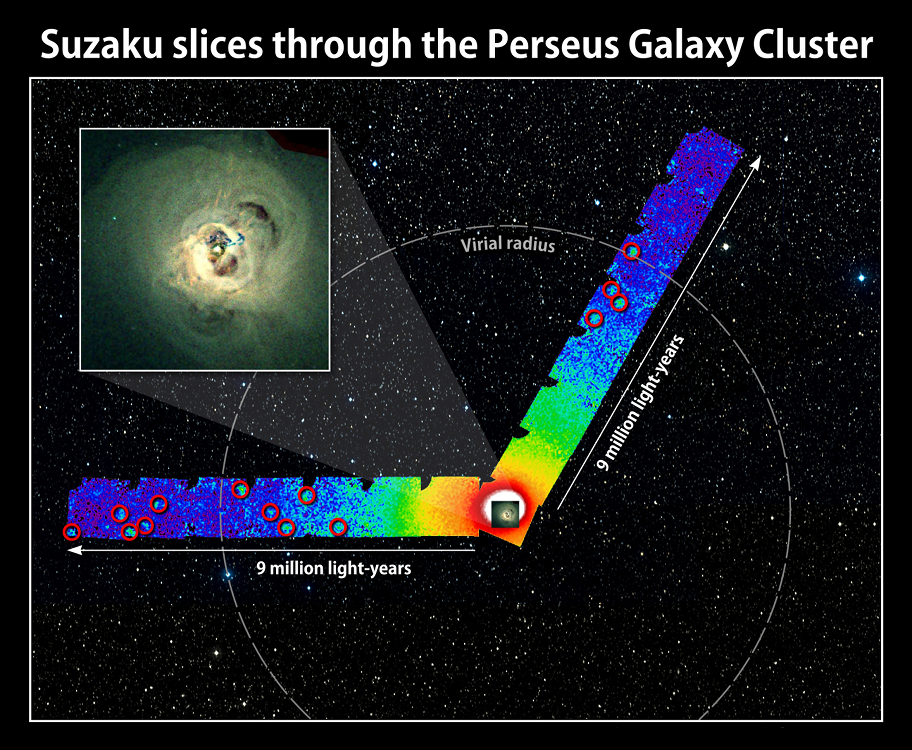
 Credit: NASA/ISAS/DSS/A. Simionescu et al.; inset: NASA/CXC/A. Fabian et al.
Credit: NASA/ISAS/DSS/A. Simionescu et al.; inset: NASA/CXC/A. Fabian et al.
The Fringes of Perseus
Most of the material Universe is composed of dark matter, a mysterious stuff that can be detected only by its gravitational effect on normal matter, the boring stuff seen electromagnetically all around us. Through its detailed study of the tiny bumps in the early Universe, the WMAP satellite found that there's about 6 times more dark matter than normal matter throughout the Universe. But observations of matter in clusters of galaxies have not confirmed the WMAP results, a significant puzzle to astronomers. In one well studied galaxy cluster called the Perseus cluster, observations of the cluster core suggested the presence of too much normal matter, mostly in the form of hot, X-ray emitting gas. But a recent series of observations of the Perseus cluster by the Suzaku X-ray observatory imaged X-ray emitting gas out to the far fringes of the cluster. The image above shows the innermost part of Perseus, imaged by the Chandra X-ray Observatory, along with the new images obtained by Suzaku. The Suzaku observations along with detailed computer modeling, suggests that the hot gas in the outer regions is rather clumpy. Accurately accounting for these clumps reduces the overall amount of normal matter in Perseus, and helps resolve the discrepancy between the X-ray data and the WMAP results.
Published: March 28, 2011
<
HEA Dictionary ● Archive
● Search HEAPOW
● Other Languages
● HEAPOW on Facebook
● Download all Images
● Education ● HEAD
>

Each week the HEASARC
brings you new, exciting and beautiful images from X-ray and Gamma ray
astronomy. Check back each week and be sure to check out the HEAPOW archive!
Page Author: Dr. Michael F. Corcoran
Last modified Monday, 26-Feb-2024 17:36:02 EST


